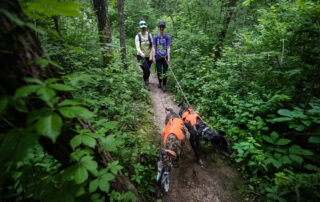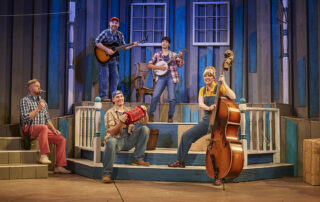For some, the thought of descending into the depths of a dark, tight cave is the stuff of nightmares. For Robert Root, the challenge of facing that fear was a journey he needed to take in Chilton, Wisconsin.
==
I’m the only one signed up for the cave tour at the Ledge View Nature Center, but Jane Mingari, the assistant naturalist, agrees to lead it. Despite a fear of tight, dark places, I’d resolved to explore a cave. Now I have no excuse to back out.
We walk to the entrance on the roofs of caves. Jane explains how the solution caves below us were carved by seepage of rain and snowmelt that sometimes become underground streams and even waterfalls. The ground beneath us is honeycombed with chambers and channels. The Carolyn’s Caverns cave system is over 700 feet long. It’s accessible part of the year for tours but closed from October to May for bat hibernation. Its first room, the Bat Room, has an opening in its steel door for bats—big brown, little brown, long-eared, and tri-colored bats—to enter and exit.
Jane urges me to explore two side rooms. I smile gamely and commit myself to crawling and clambering. I squirm on my belly in and out of one narrow passage and climb down a ladder into an small enclosed space with a muddy bottom. I hope I’ve acclimated myself to what’s ahead.
We wander through other rooms and passages, stepping carefully on the uneven floor, wary of protrusions near our heads. I bend, I stoop, I crawl on my hands and knees, and I slither outright. Only one place is especially tight, less so for Jane than for me, but crawling through passages like the Whale’s Throat and the Kid’s Passage means venturing into long dark holes with no chance to raise my head or propel myself by any means other than elbows and thighs. I try not to think about getting stuck and soon realize I don’t need to think about it.
When we descend to Carolyn’s Cave, the original entrance to the system, we’re 17 feet below the surface; at the bottom of Dave’s Sink, the deepest room, we’re 36 feet—four stories—underground. At times, bending to look down a dark passage, I feel the lure of crawling in to see just how far it would take me, how tangled and interconnected the cavities might be.
Jane illuminates layers of Silurian strata, fossils, miniature stalactites, chert and cave coral. She steers me around “hungry mud,” the sticky pools on the cave floors, remnants of times the caves have been flooded, at least once as much as eighteen feet deep. By the time we make the long crawl through the Whale’s Throat back to the Bat Room, I’m busy thinking about the slow and relentless formation of the caves, the scale of their existence. Despite the weight of the rock strata above me, the density of the walls around me, the impenetrable darkness beyond this room, I feel no eagerness to leave the caves. When we reach daylight, I feel no sense of relief.
I suppose you could say I confronted my fear of crawling in caves and overcame it. It seems to me more likely that I was too absorbed in where I was to notice my fear. Neither the caves nor my guide would let me think about that.








